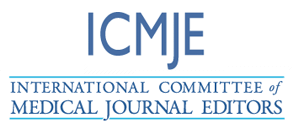Early Resumption of Food Intake After Cesarean Section Under Spinal Anesthesia: A Study on Safety, Effectiveness, and Patient Comfort
DOI:
https://doi.org/10.55677/IJCSMR/V4I2-01/2024Keywords:
cesarean section, food intake, ileus, postoperative nausea, patient satisfaction, spinal anesthesiaAbstract
Objective: This study aims to assess the safety and effectiveness of early food intake after cesarean section under spinal anesthesia, addressing the importance of postoperative care and patient comfort.
Materials and methods: A descriptive, prospective, single-center study was conducted over one year at the maternity unit of our University Hospital. A total of 157 eligible cesarean section patients under spinal anesthesia were included and divided into two groups based on their preference for resuming food intake before or after the third postoperative hour. Data on the time to resume food intake, recovery of intestinal transit, postoperative nausea and vomiting (PONV), and patient satisfaction were collected.
Results: Patients who resumed food intake before the third postoperative hour experienced a faster recovery of intestinal transit. No significant difference in PONV incidence was observed between the groups. High patient satisfaction was reported in both groups.
Conclusion: Early resumption of food intake after cesarean section under spinal anesthesia enhances intestinal transit without increasing PONV, ensuring patient comfort and postoperative care.
References
Mangesi L, Hofmeyr GJ. Early compared with delayed oral fluids and food after caesarean section. Cochrane Database Syst Rev. 2002;2002(3):CD003516.
doi: 10.1002/14651858.CD003516. PMID: 12137699; PMCID: PMC8715854.
Guo J, Long S, Li H, Luo J, Han D, He T. Early versus delayed oral feeding for patients after cesarean. Int J Gynaecol Obstet. 2015 Feb;128(2):100-5. doi: 10.1016/j.ijgo.2014.07.039. Epub 2014 Oct 22. PMID: 25457588.
Hsu YY, Hung HY, Chang SC, Chang YJ. Early oral intake and gastrointestinal function after cesarean delivery: a systematic review and meta-analysis. Obstet Gynecol. 2013 Jun;121(6):1327-1334. doi: 10.1097/AOG.0b013e318293698c.
PMID: 23812470.
Guedj, P., Eldor, J., & Stark, M. (1991). Immediate postoperative oral hydration after caesarean section. Asia Oceania Journal of Obstetrics and Gynaecology, 17(2), 125-129.
Soriano D, Dulitzki M, Keidar N, Barkai G, Mashiach S, Seidman DS. Early oral feeding after cesarean delivery. Obstet Gynecol. 1996 Jun;87(6):1006-8. doi: 10.1016/0029-7844(96)00049-x. PMID: 8649680.
Mulayim B, Celik NY, Kaya S, Yanik FF. Early oral hydration after cesarean delivery performed under regional anesthesia. Int J Gynaecol Obstet. 2008 Jun;101(3):273-6. doi: 10.1016/j.ijgo.2007.11.023. Epub 2008 Feb 14. PMID: 18279877.
Izbizky GH, Minig L, Sebastiani MA, Otaño L. The effect of early versus delayed postcaesarean feeding on women's satisfaction: a randomized controlled trial. BJOG. 2008 Feb;115(3):332-8. doi: 10.1111/j.1471-0528.2007.01591.x. Erratum in: BJOG. 2008 Apr;115(5):674. PMID: 18190369.
Macones GA, Caughey AB, Wood SL, Wrench IJ, Huang J, Norman M, Pettersson K, Fawcett WJ, Shalabi MM, Metcalfe A, Gramlich L, Nelson G, Wilson RD. Guidelines for postoperative care in cesarean delivery: Enhanced Recovery After Surgery (ERAS) Society recommendations (part 3). Am J Obstet Gynecol. 2019 Sep;221(3):247.e1-247.e9. doi: 10.1016/j.ajog.2019.04.012. Epub 2019 Apr 14. PMID: 30995461.
Wang JJ, Ho ST, Wong CS, Tzeng JI, Liu HS, Ger LP. Dexamethasone prophylaxis of nausea and vomiting after epidural morphine for post-Cesarean analgesia. Can J Anaesth. 2001 Feb;48(2):185-90. doi: 10.1007/BF03019733. PMID: 11220429.
Hassanein, A., & Mahmoud, E. (2015). Effect of low-dose ketamine versus dexamethasone on intraoperative nausea and vomiting during cesarean section under spinal anesthesia. Egyptian Journal of Anaesthesia, 31, 59-63.
Santos, A., & Datta, S. (1984). Prophylactic use of droperidol for control of nausea and vomiting during spinal anesthesia for cesarean section. Anesthesia & Analgesia, 63, 85-87.
Lussos, S. A., Bader, A. M., Thornhill, M. L., & Datta, S. (1992). The antiemetic efficacy and safety of prophylactic metoclopramide for elective cesarean delivery during spinal anesthesia. Regional Anesthesia, 17, 126-130.
Tarhan, O., Canbay, O., Celebi, N., Uzun, S., Sahin, A., & Coşkun, F., et al. (2007). Subhypnotic doses of midazolam prevent nausea and vomiting during spinal anesthesia for cesarean section. Minerva Anestesiologica, 73, 629-633.
Balki, M., & Carvalho, J. C. A. (2005). Intraoperative nausea and vomiting during cesarean section under regional anesthesia. International Journal of Obstetric Anesthesia, 14, 230-241.
Imeh, A., Olaniyi, O., Simeon, O., & Omotola, O. (2014). Dexamethasone versus a combination of dexamethasone and ondansetron as prophylactic antiemetic in patients receiving intrathecal morphine for cesarean section. African Health Sciences, 14, 453.
Downloads
Published
Issue
Section
License
Copyright (c) 2024 International Journal of Clinical Science and Medical Research

This work is licensed under a Creative Commons Attribution 4.0 International License.












